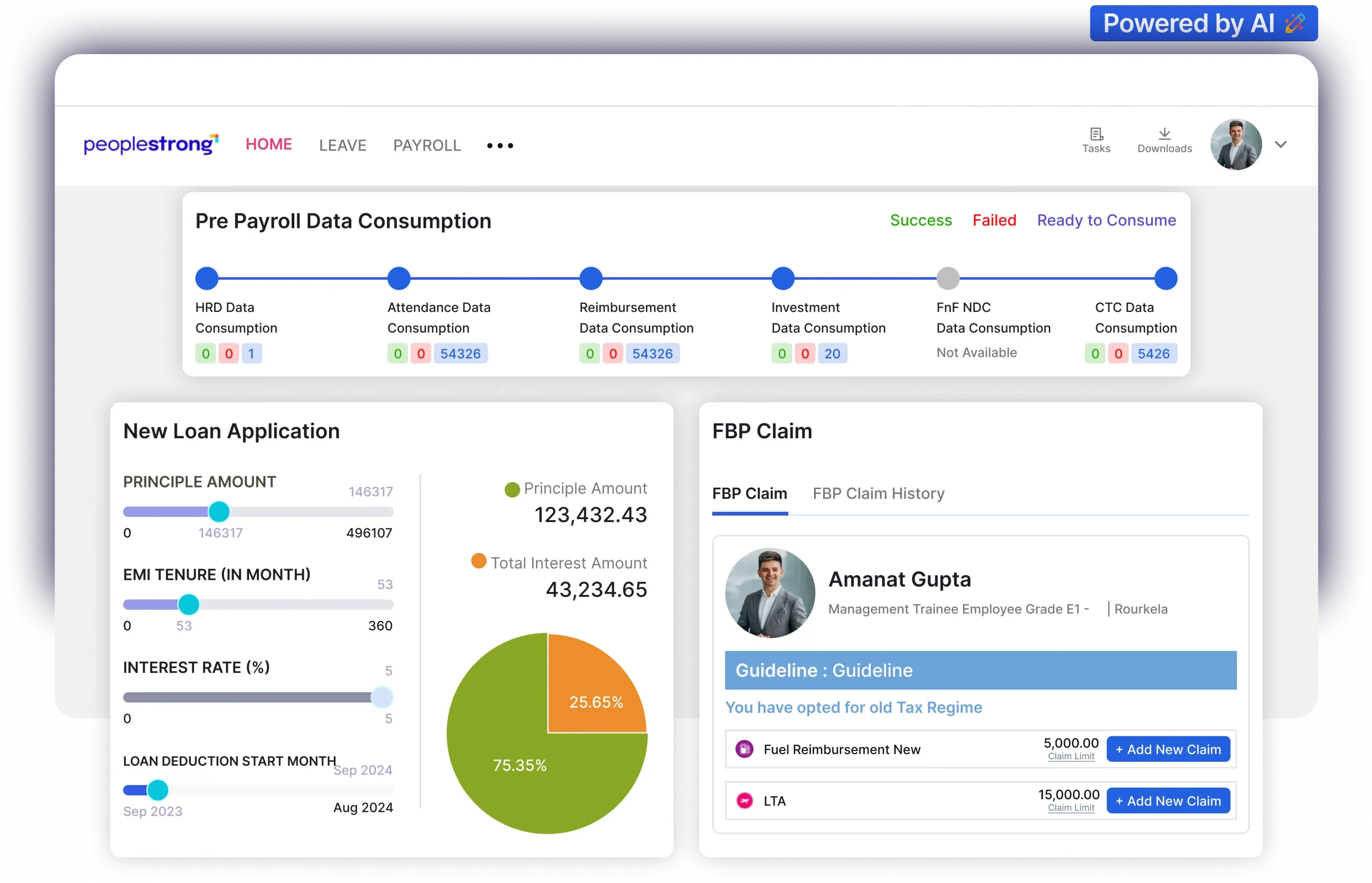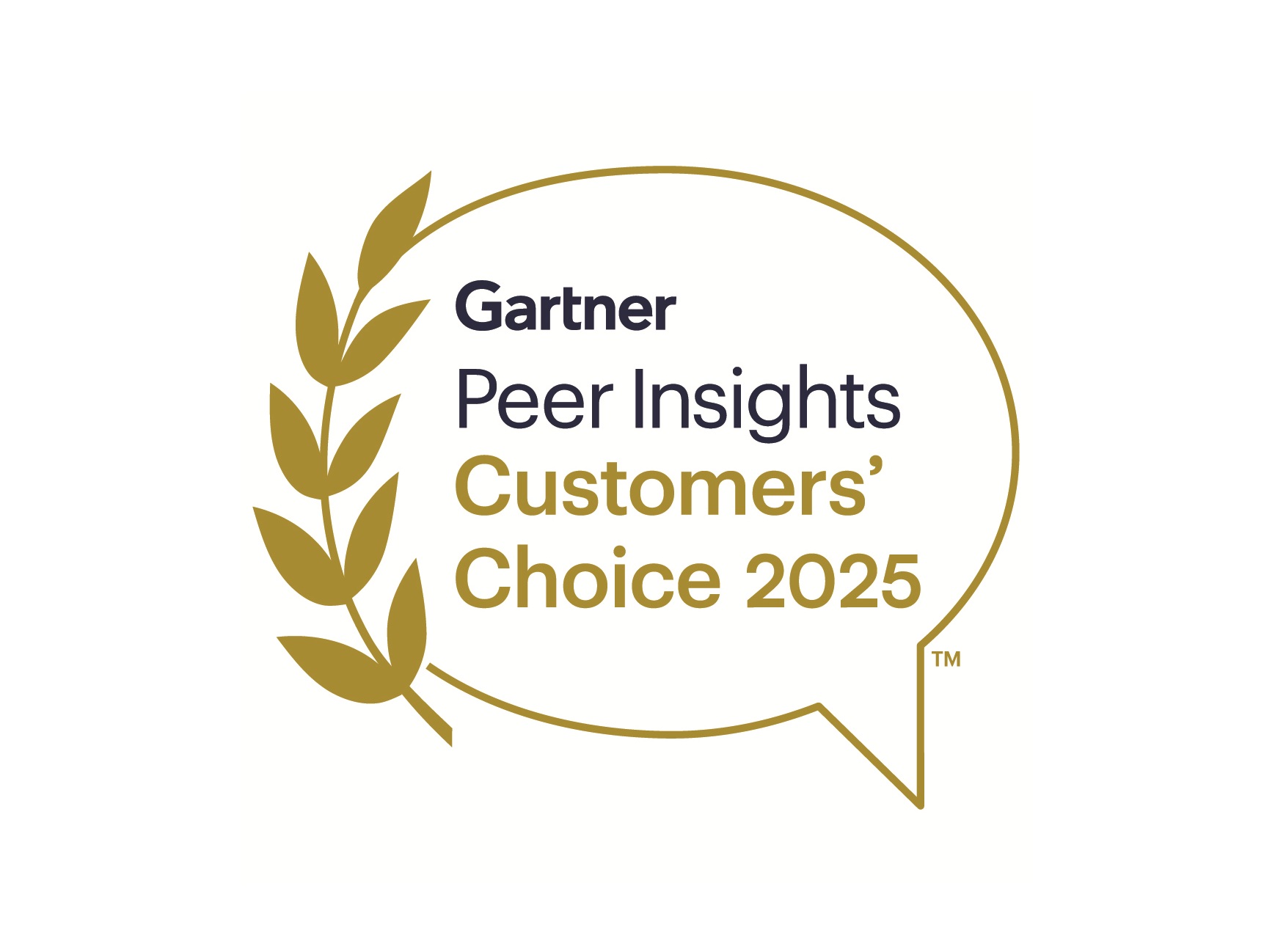An effective talent management strategy is meant to develop a pool of talent, as a resource to meet identified needs, with support from the highest level, activities developed with HR policies and practices.
The diverse talent mix we have today has the potential to impact innovation in an unprecedented way, and keeping them interested in your organization is a task that needs the fullest efforts in every way possible. About 48% of employees are almost always actively looking for other jobs, and having a strong talent management strategy is going to definitely get more of these people actively engaged with your company, and give their best to you for years to come.
In this blog, we’ll go over how to craft a rock-solid talent management strategy step-by-step, so you leave no stone unturned and reap all the benefits of having a dedicated workforce who will go to the ends of the Earth to get results for you.
Suggested Read:
The Ultimate Guide to Talent Management
Importance of Having a Talent Management Strategy
- Employees benefit from tailored learning and development initiatives, fostering a proactive approach to career growth
- Sustains a culture of ongoing innovation
- Offers growth opportunities regardless of employees’ current role
- Offers premier development opportunities to attract top-tier talent
- Leverages a diverse talent pool to explore and capitalize on new business opportunities
Suggested Read:
The Importance of Talent Management
What Makes Crafting a Talent Management Strategy Complex?
A healthy talent management strategy ensures the right skills are placed in the right numbers right where they are needed, and knowledge and practices to do the same are disseminated throughout the organization. Without a solid strategy, workforce planning and talent planning are moot.
- Not aligning competencies for business objectives with individual talent and aspirations
- Underestimating global managerial groups in transnational firms
- Taking talent management initiatives less seriously, and reviewing them yearly once or once in a few years
- Managers don’t recognize the importance of developing people working under them and are too task-focused
- Not having CEO buy-in and investment in talent management
- Leadership pipeline clogs when gaps between performance expectations and actuals are allowed to exist for a long time
- Managers fall back on old and familiar behaviors to produce the same results
- Selecting the wrong person
- Defining jobs poorly
- Leaving poor performers in their jobs too long without remedial actions
How to Craft a Talent Management Strategy?
Danny Kalman, the former Global Director of Talent at Panasonic, says, “Aligning talent management strategy with the business strategy because maximizing the talent of individual employees is a unique competitive advantage.”
1. Get Executive Buy-in From the Get-Go
Getting the board approval and the C-suite to sign off on business objectives, business strategy, and people strategy for the next 3-5 years is the first step towards creating a talent management strategy. Once that’s ironed out, translate business objectives into high-level corporate ones. Each business objective will have an implication for the types and the number of talent needed across the board.
Let the following questions guide your objective-setting:
- How will talent flow throughout regions?
- How to amend culture to ensure freedom of movement and opportunity within the organization?
- How can the loss of key skills to another company be countered by gains?
Set enterprise-level objectives, along with objectives for each horizontal and vertical function, and encourage the board to review and sign off on it.
2. Assess Current Talent Supply and Potential
Observe what your recruiting metrics tell you about the time to hire and onboard talent based on business needs within the company in the short or medium term without having to spend much on training. Who among your existing employees can prepare to develop in the long term? Look for specific skills and behaviors across the workforce and those who are willing to convert them into actions and results to improve your organization’s competitiveness.
Competency-based talent supply identification seems like a logical and more informed way to go, for large and small enterprises alike. Draw up your organization chart, and consider each role, and take stock of the knowledge, experience, skills, competencies (functional, behavioral, and cross-functional), required for each role. Studies suggest that skill-centric talent management is the future of people development.
Then, assess these parameters with those of employees currently filling these roles, and measure their desire to grow. This is a critical step for organizations to ensure they are prepared to support themselves when individuals in key positions up and leave in the next few months or years.
3. Analyze Talent Gaps
Now that you know what your talent supply is, and what the demand is (based on your objectives), in the short and long term, you’ll need to figure out the gap, so you can decide whether to look internally for talent or hire from outside. Is there a talent shortage or abundance within the company? What should you focus on in the present to ensure future leaders and future talent management are taken care of?
Should you be directing most of your efforts into highly competent people, or skill development to push performance, or improve culture to naturally bring out the best in people? These are questions to ponder over, as you ascertain the talent gap. Once you carve out the gap and the numbers to fill the gaps, send all information to the CEO and the board, or present them as part of the normal operating review process.
4. Set the Base for Talent Strategy and Develop Role Clarity
Now that we have the objectives, assessed supply, and identified the gaps, move on to the action plan. This is the phase you formulate a strategy that organically sets a nurturing, and warm environment in the workplace, to attract sterling talent, break down walls hindering performance, and create processes that unleash the best in people. In this process, you figure out employee engagement initiatives required to ensure line managers inculcate practices into the culture and daily practice, set milestones to measure progress and timely review mechanisms.
Many duties performed by job holders are frequently overlooked, and obtaining role clarity is the best way to rule out any ambiguity. Compare what an employee does, vs what is required at a given level, vs the working model, and what duties their manager and subordinate do, and you arrive at role clarity.
5. Developing People Managers
It’s important for line managers to be more than just taskmasters. Growth of the people along with the results and productivity is the ultimate goal of talent management. Most often individual contributors who are amazing at their jobs are assigned to be managers, and this leaves them hamstrung, as they have little idea on how to lead, nurture employees, inspire, and guide them without providing all the answers.
This is why training your people managers in managing people is crucial if you’re serious about crafting a foolproof talent management strategy. Additionally, employees interact with their managers every single day, and when they’re apprised of how to identify non-verbal distress cues, help them, and support them, employees’ quality of life at work improves drastically.
6. Demonstrate ROI and Establish Checkpoints
Once the action plan is in place, what metrics should you establish to measure the effectiveness of the strategy? The following metrics will give you a fair picture of how the new talent management strategy is playing out amongst your workforce:
- Supply of sufficient number of skilled people to the required business units on time
- Reduced turnover
- Increase in employee satisfaction
- Climbing customer satisfaction, and ROI on training initiatives
- Marked reduction in talent gaps
- Significant contribution to shareholder value
- Operating results (revenues, cost, and profits)
- Customer results (acquisition, retention, penetration, and delight)
- Improvement in quality of relationships among employees (working relationships with employees, team playing abilities)
7. Identify the Potential Impact on HR Processes
Any major strategic change has a cascading impact. Assess how much of an impact the new talent management strategy has/will have on HR processes. Check how many new helpdesk tickets you get, what processes use minimal resources now, how far have the cost of candidate acquisition, retention, and deployment gone down, and how quickly are open positions being filled.
Parallelly figure out if the organization has secured the services of the best people in the industry for new ventures or entering a new market. What is the impact on hierarchy and the organizational design after implementing such a radical talent management strategy? Does it require change? Seek answers to these questions, and you’ll be better prepared to handle any challenges that come your way.
8. Assess Readiness of Staff to Assume Leadership Positions (Performance vs Potential)
Who better to tell you if your employees are ready for the next level of responsibilities other than their own managers? Given how you’ve administered managers’ training, it’s highly likely that they’re operating in the interest of both the company and their employees. Get inputs from them about staff readiness – on who has the potential to assume higher positions, and who needs time to groom themselves to grow in the years to come. Get managers and their team members to do a SWOT analysis of their team, and come up with findings on who’s irreplaceable in the team, who can lead someday, etc.
Exceptional performers are those who have outgrown their level and can exceed the position, and this makes them restless, and vulnerable to headhunter’s calls. Giving them room for growth, in the direction that benefits the organization and the employee increases motivation to become better, hone skills, and take on more challenging tasks, while simplifying succession planning.
Do not consider potential without proof of performance. There are three categories of potential, as highlighted by The Leadership Pipeline by Ram Charan, Global Advisor to CEOs & Corporate Boards, and identifying them early on will help you drive the strategy:
| Turn potential | Growth potential | Mastery potential |
|---|---|---|
| Able to do the work at the next level in 3-5 years | At the same level in the near team | Currently being done, only better |
Appoint these individuals to new leadership positions to create a performance gap. Since they’re moving to a different role with a higher set of skills, they won’t be able to deliver immediately upon taking up the new role and start showing results right away. That’s where coaching and development step in. Test whether they can handle additional responsibilities and demonstrate a willingness to go the extra mile and take on new tasks. There will always be performance gaps, a robust talent management strategy must warrant a gap all the time, so there’s always room for growth.
9. Engage Stakeholders Across the Organization
Chalk out a communication plan to roll out the new strategy to your workforce, and incentives to make them adopt the new scheme of things, with less friction as possible. But, that’s just one-way communication. To get real buy-in from all levels, you need internal advocates or champions for your cause – to drive the new talent management strategy.
This can be line managers, team leaders, and influencers within the workforce who can get employees’ attention, and influence them. Communicate the purpose of the program, changes to be expected, a timeline of changes, and benefits to individual employees, teams, and the organization as a whole. The Talent Handbook for Competency-based Growth shows the three-pronged benefits that you could use to drive the execution of the strategy:
| Benefits to senior management | Benefits to HR managers | Benefits to employees |
|---|---|---|
| More skilled workforce | Faster and hassle-free HR processes | Clear job roles |
| Increase in productivity | Increased ROI from change management initiatives | Structured career path |
| Meeting business objectives more than ever | Targeted L&D | |
| Improved organizational effectiveness |
Examples of Companies with Amazing Talent Management Strategies
Here are a few companies that exhibit truly progressive talent management strategies and present a growth-conducive environment for their employees.
Netflix
Reed Hastings, and Marc Randolph, founders of Netflix wanted to create an organization entirely made of top performers with an incredible level of freedom without chaos, or rules to hold them in place. They follow a talent-density approach where the organization is treated like a high-performing Olympic team, where employees are constantly chasing after one opportunity after the other in the company, to put their talent to better use.
Netflix conducts a keeper test once or twice a year, where managers sit down to reflect on what would happen if an employee leaves and how would they react to it. They ask themselves the same question about every employee. If they’re shocked and worried about the team’s future, it means the employee is a keeper and must be retained with ample growth opportunities at all costs. If not, there’s a problem and it must be addressed. Of course, there’s room for bias, but it can show how influential high-performers can be in a team.
Toyota
Toyota is one of the best companies to have a robust talent management strategy for decades, and not without good cause. One of their people strategies involves a lean concept – kaizen. By this principle, they take employees who know nothing about a certain point of your business and make them go work there and solve problems there for a week or two.
This helps them create mixed, blended teams, and to bring in diverse perspectives that nobody on the original team does. This accelerates growth and development. In big companies, generally, people become siloed and close themselves to outside perspectives. This helps them open up their perception, and unleashes creativity,
Titan
The jewelry division of the Titan group, Titan Tanishq conducts a yearly event to bring out hidden talent in employees through an event called Impact Mela. It’s an exhibition where employees display an innovative product, or solution they discovered, or invented to simplify their work or any other process in the company. It can be as simple as discovering a new methodology to stop water from dripping continuously from the water cooler, thus saving thousands of rupees for the manufacturing plant, or a different, simpler method to clean metal without using power, but giving the same accuracy time and time again.
This exhibition is an excellent way to bring out employee creativity. They can also put up stalls displaying their own personal pet projects – anything they put their heart and soul into developing from scratch. It’s open to all employees and their families, and each year the best innovation is rewarded publicly and handsomely. This singular event, as part of their talent management strategy, has helped boost skill development and increase productivity year after year.
How to Make Your Talent Management Strategy Foolproof?
- Conduct at least one succession planning meeting every year, and follow up with quarterly reviews on progress.
- Have a team-wise plan for reporting on improvement, and progress and raise requests for support as and when needed.
- Let the leadership monitor the ratings and the course of development at least 2 levels beneath them.
How Can PeopleStrong Help?
Given how critical the talent management function is, you need a team of seasoned experts to help you brainstorm HR process improvement, visualize the ideal employee lifecycle you want to create for your workforce, and show you the infinite possibilities you can have with the help of technology.
PeopleStrong will help you ideate with experts by your side, and bring in the A-team to carry out the end-to-end agile implementation of our talent management software in a short while, without any operational disruption, so you can seamlessly transition from your existing talent management process to the next level with no friction, while also future-proofing it with AI.
Contact us today, to schedule a free demo and get a headstart on your talent management initiative.
Frequently Asked Questions
How can an organization assess its current talent?
An organization can assess its current talent through various methods, including performance reviews, 360-degree feedback, and skills assessments. Performance reviews evaluate employees’ job performance and contributions, while 360-degree feedback gathers input from peers, subordinates, and supervisors to provide a comprehensive view of an employee’s abilities. Skills assessments test specific competencies relevant to job roles. Additionally, employee surveys and self-assessments can offer insights into engagement, satisfaction, and career aspirations.
What role does leadership play in talent management?
Tools like Applicant Tracking Systems (ATS) improve recruitment efficiency, while Learning Management Systems (LMS) support continuous employee development. HR analytics platforms provide insights into employee performance and potential, enabling data-driven decisions for succession planning and talent retention. Additionally, collaboration tools and digital platforms foster engagement and connectivity among employees, especially in remote or hybrid work environments.
How can technology support talent management?
Technology supports talent management by streamlining and enhancing various HR processes, such as recruitment, onboarding, performance evaluation, and training. Talent management systems (TMS) and human resource information systems (HRIS) provide centralized platforms for tracking employee data, performance metrics, and development plans. These systems facilitate data-driven decision-making, automate administrative tasks, and provide analytics for identifying trends and gaps in talent management.
Empower your workforce with PeopleStrong's Talent Management solution, designed to nurture growth and drive performance. Leverage comprehensive tools for goal-setting, performance tracking, and learning and development. Enhance employee engagement and unlock your organization's full potential. Experience the impact of PeopleStrong's Talent Management — click below to schedule a personalized demo today.
Contact Us Now




















